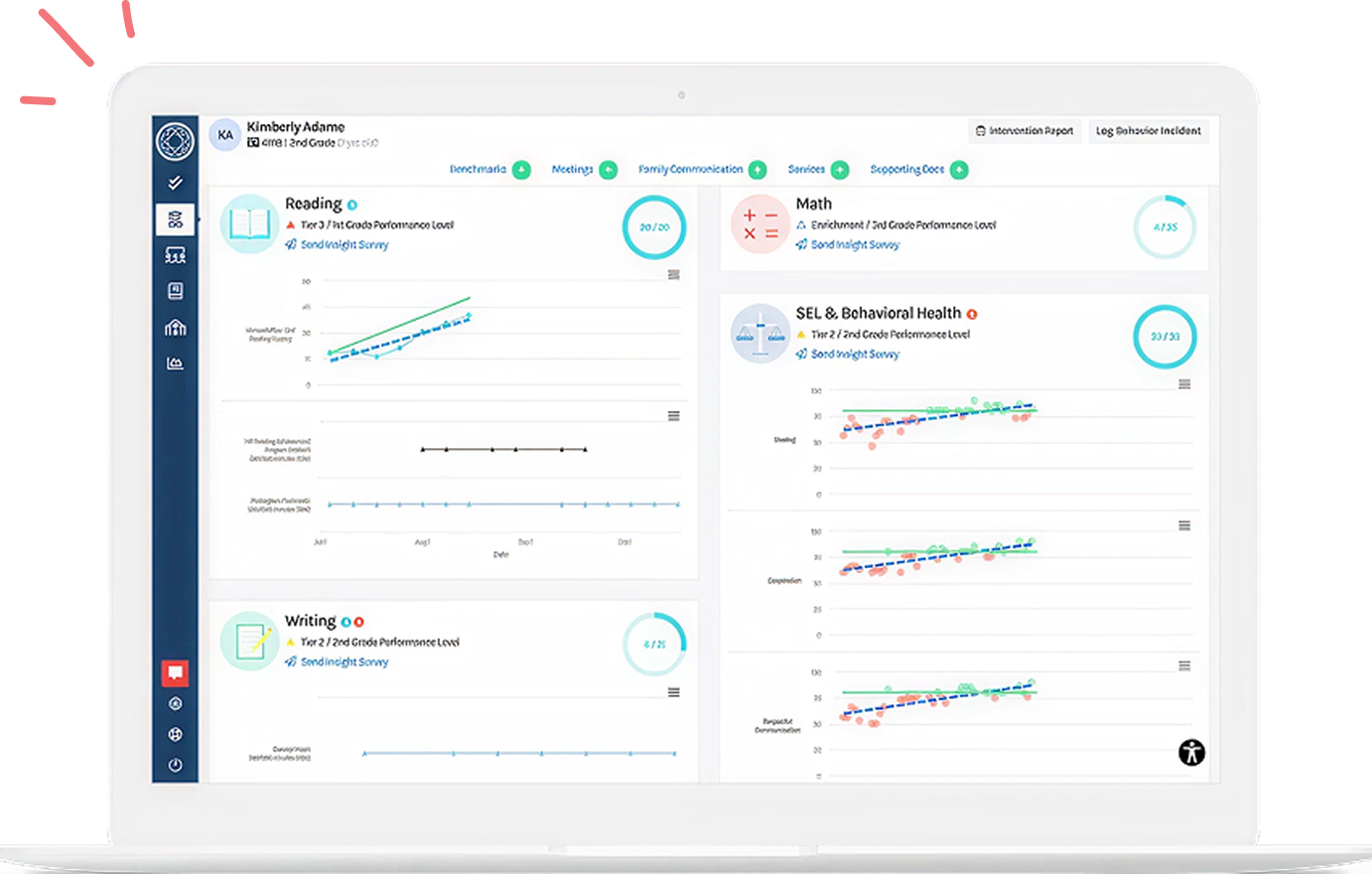Just as a pilot uses their dashboard, a farmer measures rainwater, or a nurse checks vitals, data in MTSS is a tool meant to be used for more than determining final success or failure. Data is a helpful guide in real time. Progress monitoring data provides educators with the insight they need to adjust course throughout the year and make the best use of their valuable time and resources to support students. And, school leaders play a crucial role in guiding staff with data analysis.
Here are four things that great school leaders do to set up their teams for success with progress monitoring.
#1) They Create a Positive Culture Around Data Conversations
The data is what it is, so approaching the conversation as a collaborative problem-solving process — rather than a time for blame and shame — is crucial to getting teams to do their best work. Great leaders model positive intent, assuming that everyone cares about student progress, and allow the data to inform the collective work. Where the data highlights problems, focus on solutions, and where the data highlights success, celebrate and use that momentum towards problem-solving in other areas.
💡 Check Out This On-Demand Webinar → Creating a Culture of Continuous Improvement
#2) They Establish a Structured Monitoring System
It’s not just about what data you collect, but what you DO with the data you collect. Effective data leaders have a structured plan for:
- Who will review the data
- When, where, and how the data will be reviewed
- What actions will result
Providing protocols and procedures for when to change, intensify, or exit interventions ensures clarity and consistency for staff, parents, and students.
💡 Additional Resource → MTSS Intervention Flowchart
#3) They Encourage Examination of Intervention Fidelity
Make it normal to have someone putting eyes on what's happening during intervention time. Maybe the intervention is happening, but there are missing components, or student behavior is a problem. Provide teachers with opportunities to observe one another as well. There are so many benefits to the feedback loop created when colleagues and leaders spend time observing instruction and looking for specific fidelity markers. Witnessing the intervention in real-time provides insights into the “why” of outcomes seen in the data and helps produce quality solutions during planning meetings.
💡 Read more about Fidelity Monitoring
💡 Watch This On-Demand Webinar → No Teacher An Island: De-Privatizing the Classroom
#4) They Prioritize Root Cause Analysis Over Immediate Tier Escalation
While there's an understandable urgency among educators to provide intense help, great leaders resist the urge to make tier escalation an automatic response. Great leaders look for trends in the data to see what is and isn’t working and why. Root cause analysis ensures the best possible intervention for all students. Although this approach takes time and skill up front, it will actually save time and sanity in the long run. Resources are not unlimited, and teachers need analysis that focuses on intensive help at just the point where it is needed.
💡 Additional Resource → Blog: How to Know if an Intervention Plan is Successful
Lead Your Team to Intervention Success
When leaders create the conditions for collaboration around data analysis, teachers have the support and information they need to help each student reach their goals. They see the continuous improvement process in action, which builds collective efficacy and amplifies their efforts far beyond what any individual can do on their own.
💡 Learn more from this webinar: The MTSS 6-Week Intervention Check-In
In this webinar, Britt Shurley and Larissa Napolitan have valuable insights for leaders working with their teams to assess the effectiveness of intervention goals and plan collaboratively.
Branching Minds Can Help
| “Branching Minds is giving us a streamlined way to look at data that are important for decision-making from the student level to the class level to the grade level to the school level and to the district level.” - Mandy Couturier, Director of MTSS, Vermont |
Get your team the visibility, insights, and support they need to help students succeed! 🚀
|

About the author
Larissa Napolitan
Larissa Napolitan is the Content Marketing Manager for Branching Minds and the host of Branching Minds' podcast "Schoolin' Around." As a former middle school English teacher and instructional coach, she has over 13 years of experience building systems for improvement, training and coaching teachers in new technology and instructional methods, and leading efforts to build curriculum and literacy initiatives. She holds Masters's degree in Curriculum and Instruction and Education Administration from Emporia State University. She is passionate about telling the stories of educators and all that they do to support students.

Your MTSS Transformation Starts Here
Enhance your MTSS process—book a Branching Minds demo today







